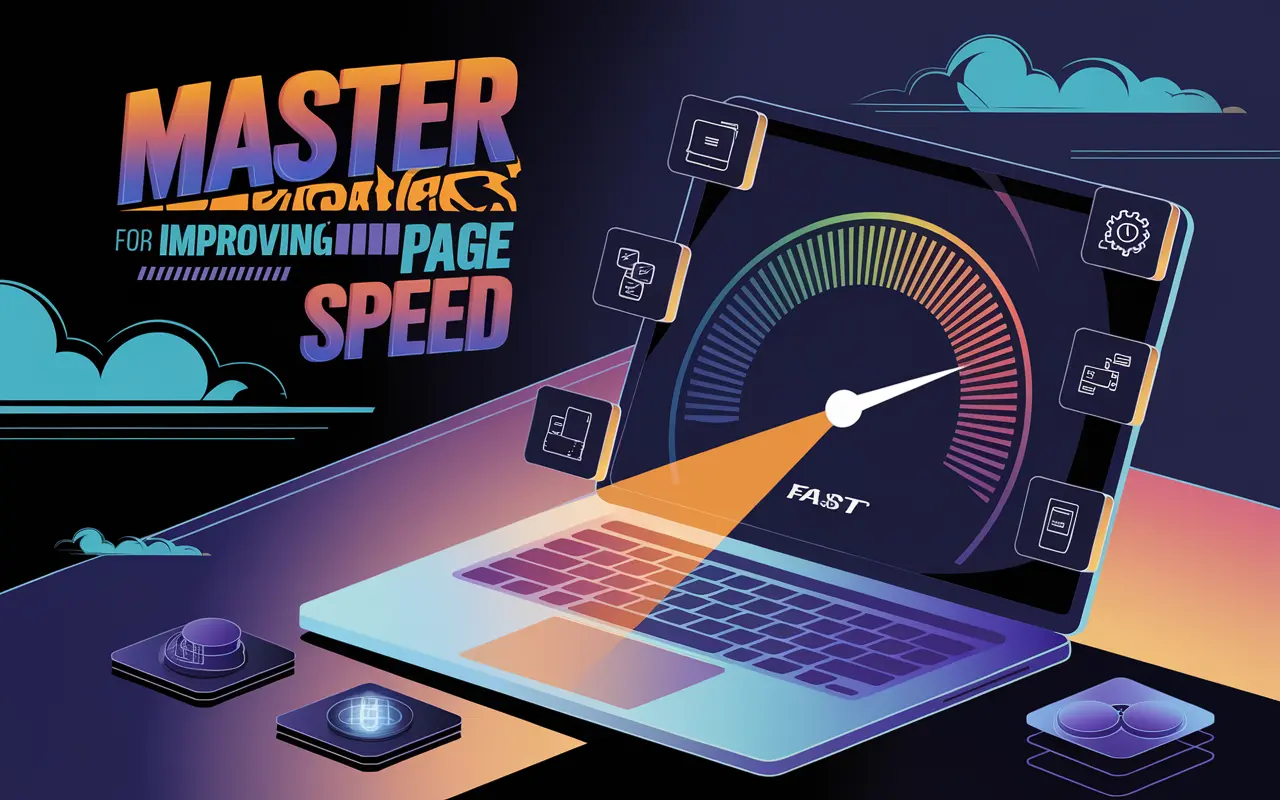Understanding Page Speed Optimization: What It Means in SEO
Page speed optimization refers to techniques that improve how quickly a web page loads on both desktop and mobile devices. It’s a crucial technical SEO factor that directly affects user experience, search engine rankings, and ultimately, revenue. With Google’s Core Web Vitals now being a part of the ranking algorithm, page speed is no longer optional—it’s essential for online success.
Improving page speed enhances crawlability, reduces bounce rates, and increases conversions by delivering content to users efficiently. It resonates with both users and search engines, making it a tactical advantage in SEO campaigns.
Key Takeaway
Implementing best practices for improving page speed leads to better rankings, lower bounce rates, and enhanced user experience, playing a vital role in any high-performing SEO strategy.
Why Page Speed Improvements Matter for SEO Performance
Page speed is a strong ranking factor according to Google’s SEO guidelines. Here’s how improving it helps:
1. Enhances User Experience
Faster websites lead to better engagement. When users have to wait more than 3 seconds, bounce rate spikes. Reducing load time brings down abandonment rates and increases interaction.
2. Increases Crawl Efficiency
Search engine bots have a crawl budget. Faster sites allow more pages to be indexed in less time, helping more content become visible in search results.
3. Boosts Mobile Rankings
Mobile-first indexing is the norm at Google. Websites that load quickly on phones see better mobile rankings, increasing their visibility where users spend most of their time.
Proven Best Practices to Improve Page Speed
Here are essential strategies to significantly improve your page load times:
- Optimize Images: Compress images using formats like WebP, use responsive image sizes, and specify dimensions to reduce layout shifts.
- Leverage Browser Caching: Set long expiration dates for static assets to allow returning visitors faster load speeds.
- Minimize HTTP Requests: Reduce the number of on-page elements, combine scripts/stylesheets, and eliminate unnecessary redirects.
- Implement Lazy Loading: Load images and videos only when they’re about to appear in the viewport.
- Use a Content Delivery Network (CDN): Distribute content globally to decrease latency and load times for international users.
- Minify CSS, JavaScript, and HTML: Remove excessive whitespace, comments, and unused code to shrink file size.
- Enable GZIP Compression: Compress files to reduce the amount of data transferred between server and browser.
- Reduce TTFB (Time to First Byte): Optimize server response times through reliable hosting, database tuning, and efficient back-end queries.
| Page Speed Factor | Tool to Monitor | Impact on SEO |
|---|---|---|
| Image Optimization | PageSpeed Insights, TinyPNG | Improves load time and layout stability |
| Server Response Time | GTmetrix, Lighthouse | Increases crawl budget and indexation rate |
| Use of CDN | Cloudflare, KeyCDN | Delivers assets faster, improves international UX |
How Page Speed Optimization Works in Practice
Page speed optimization combines front-end and back-end improvements to reduce the time it takes for a browser to load content. Let’s break down how it functions technically:
Front-End Optimization
This includes anything sent to the user’s browser—HTML, CSS, images, and scripts. Strategies like minification, lazy loading, and pre-loading assets help streamline delivery.
Back-End Optimization
Focuses on the server side. Upgrading hosting services, optimizing databases, and using caching mechanisms like Redis or Varnish significantly reduce server response time.
Using Tools
Tools like Google’s PageSpeed Insights, Pingdom, Lighthouse, and GTMetrix help identify bottlenecks and solutions. They score your page and provide actionable insights tailored to your site structure.
Real-World Success: Reducing Load Time Boosted Ranking
Problem: High Bounce Rate and Poor Rankings
A SaaS provider was experiencing low visibility and user retention. Their home page loaded in nearly 8 seconds, well above the acceptable range.
Solution: Implemented Page Speed Optimization Techniques
The SEO team compressed images, enabled browser caching, migrated to a CDN, and reduced HTTP requests by merging CSS and JS files. They also switched hosting to a faster server with better TTFB.
Results: 45% Faster Load Time and 38% Traffic Increase
After improvements, the home page load time reduced to 2.5 seconds. Bounce rates dropped 22%, and organic traffic rose by 38% in 3 months. Keyword positions improved across 10 core SERPs.
Common Mistakes to Avoid in Page Speed Optimization
- Using High-Resolution Images Without Compression: Always compress images before uploading.
- Blocking Critical Resources: Don’t block JavaScript or CSS files needed for rendering above-the-fold content.
- Too Many Plugins: Excessive JavaScript-heavy plugins slow down response times.
- Neglecting Mobile Optimization: Ensure your mobile experience matches desktop speed or better.
Related Terms
Explore more SEO glossary terms connected to improving page speed:
- Technical SEO: Enhances site architecture, crawlability, and performance including speed.
- Core Web Vitals: Google’s metrics that include speed, interactivity, and visual stability.
- Site Performance: Examines server performance, uptime, and fast loading times.
FAQs About Best Practices for Improving Page Speed
A good page load time is under 3 seconds. Pages loading under 2 seconds are considered ideal for user experience and search rankings.
Yes. Page speed is a confirmed ranking factor in Google’s algorithm, especially after the Page Experience and Core Web Vitals updates.
Top tools include Google PageSpeed Insights, GTmetrix, Lighthouse, WebPageTest, and Pingdom for comprehensive performance statistics.
It’s best to check page speed once a month, or after any major website changes such as design rollouts or plugin installations.
Conclusion: Don’t Let Slow Speed Hold Your Rankings Back
Page speed is one of the most vital—yet often overlooked—determinants of SEO success. Fast-loading sites are rewarded with higher rankings, better engagement, and improved conversions. By following the best practices covered here, businesses can future-proof their SEO performance and delight both users and search engine crawlers alike.
Start optimizing your page speed today to gain a competitive edge. For more SEO strategies, visit our SEO resource center.






